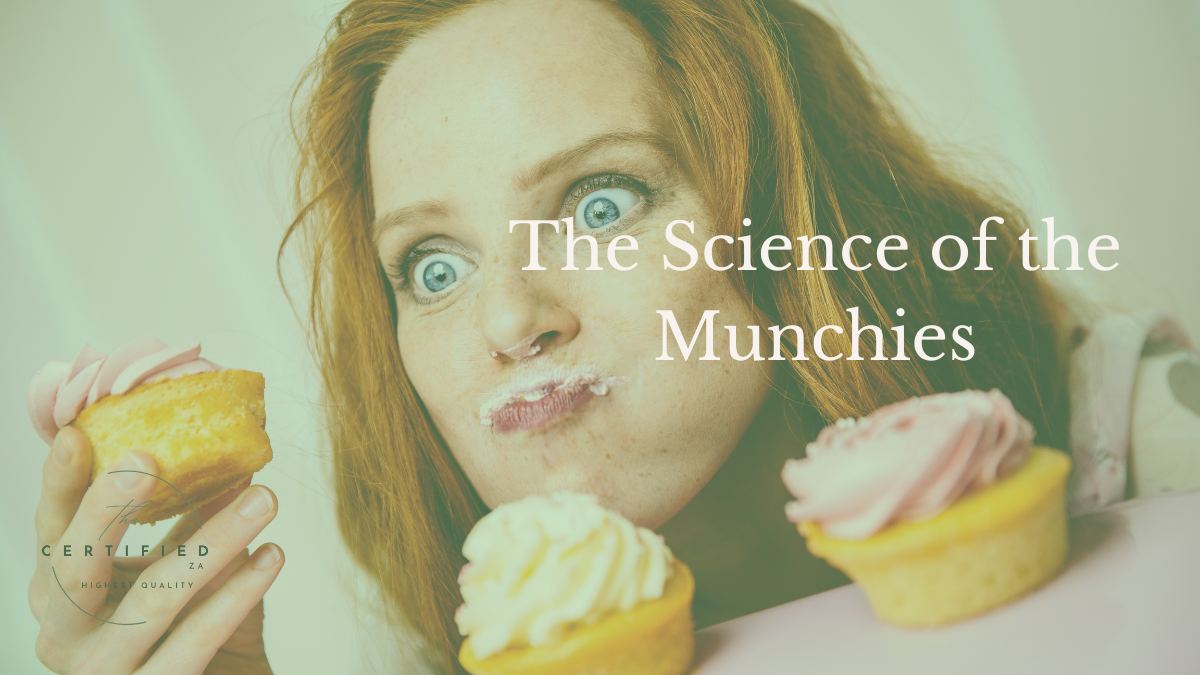
For anyone who has ever consumed cannabis, the term “munchies” is likely familiar. It’s that undeniable urge to snack, an amplified craving for food that can turn even the most mundane meal into an unforgettable experience. But what is happening behind the scenes in our bodies and brains when cannabis triggers this sensation? Is it purely psychological, or is there a deeper biochemical process at play?
We explore the science behind the munchies—how cannabinoids interact with our hunger hormones, the brain’s reward pathways, and why cannabis has been both celebrated and studied for its appetite-stimulating effects.
The Endocannabinoid System and Hunger
At the core of cannabis-induced hunger lies the endocannabinoid system (ECS), a complex network of receptors and neurotransmitters that help regulate various physiological processes, including appetite, metabolism, and mood. The ECS consists of cannabinoid receptors CB1 and CB2, which respond to both endocannabinoids (naturally produced by our bodies) and exogenous cannabinoids like THC from cannabis. You can read more on this in our other blogs here.
Research has shown that CB1 receptors are heavily concentrated in the hypothalamus, the part of the brain responsible for controlling hunger and energy balance. When THC binds to these receptors, it mimics the actions of natural endocannabinoids, leading to increased food-seeking behavior and a heightened enjoyment of eating.
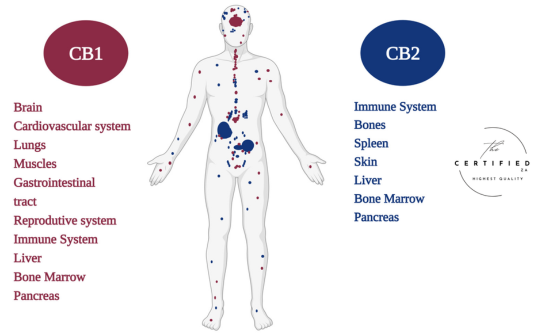
Studies have also linked CB1 receptor activation to ghrelin, a hormone commonly known as the “hunger hormone.” When THC is introduced into the body, ghrelin levels rise, signaling the brain that it’s time to eat—even if the person has already had a meal. This explains why cannabis users often feel an insatiable desire to snack, even when they aren’t truly hungry.
The Brain’s Reward System: Why Food Tastes Better
Beyond simply making you feel hungry, cannabis also enhances the pleasure of eating. The mesolimbic dopamine system, often referred to as the brain’s “reward center,” plays a critical role in how we experience pleasure from food. When CB1 receptors are activated, they amplify the release of dopamine, making flavors, textures, and aromas more intense and enjoyable.
A study by Kirkham (2009) found that THC not only increases the desire to eat but also enhances the brain’s perception of food palatability. This means that the same meal consumed while sober may taste significantly better when under the influence of cannabis. This could explain why certain snacks—especially sweet, salty, or fatty foods—become overwhelmingly appealing after cannabis use.
The Role of Ghrelin, Leptin, and Insulin
While ghrelin increases hunger, leptin is the hormone responsible for signaling fullness. Interestingly, studies have shown that cannabis use inhibits leptin signaling, meaning the brain doesn’t receive its usual “stop eating” message. This further contributes to the extended food cravings associated with the munchies. Which also explains why some stoners can destroy a whole pizza alone…
Another fascinating effect of cannabis on metabolism is its interaction with insulin. Some research suggests that chronic cannabis users have a lower prevalence of obesity and diabetes despite their increased caloric intake. This could be due to the way cannabinoids influence insulin resistance and energy storage in adipose tissue, though more research is needed to fully understand this complex relationship.
Cannabis is truly fascinating.
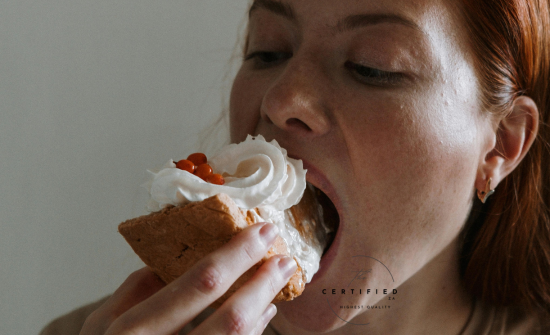
Beyond Hunger: The Cultural Significance of Munchies
While the munchies are often discussed in scientific terms, they are also deeply embedded in cannabis culture. For decades, cannabis has been associated with social food experiences, from indulging in late-night snacks to culinary creativity inspired by heightened senses. Some users report that cannabis helps them appreciate food more mindfully, savoring flavors in ways they never had before. They might just be high if you ask me…
When it comes to munchies favorites, the list is as diverse as the cannabis community itself. Some prefer the salty-sweet contrast of popcorn and chocolate, while others opt for classic comfort foods like pizza, nachos, and ice cream. Then there’s the DIY munchies crew, those who get creative in the kitchen, experimenting with new flavor combinations they might never have considered while sober.
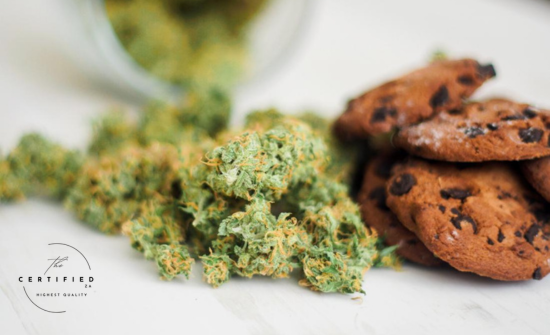
The munchies are also a highly social experience. Sharing snacks with friends, passing around a bag of chips, or making an impromptu food run at midnight creates a sense of community and joy. Whether it’s laughing over a ridiculous food craving or debating the best snacks to eat while high, the munchies are often a bonding moment that brings people together.
In the medical community, these appetite-stimulating properties have been harnessed to help patients suffering from cachexia, cancer-related anorexia, and HIV/AIDS-induced weight loss, making cannabis a valuable tool for improving quality of life in certain individuals. Some who just find it hard to stomach food will say that without smoking a little prior to eating it would be a grueling task.
What some Stoner’s Say about the Munchies
Athena Baucum – Have run directly into door frames three times in a minute
“Anything I can get my grubby little hands on. Main motive? Consume. I don’t care if it’s two boxes of cold Hungry Howies pizza or just a bag of spinach. It will be gone soon. I’ve filled up a gallon of water and drank the whole thing just because I needed to have something in my mouth. There are things I prefer more (greasy, salty, and savory) but I would eat my goddamn bed if I could get my mouth around it.”

Shane Zimmerman (Cannabis enthusiast for 20 years)
“CARBS, CARBS, CARBS.
First, to dispel some myths, not all cannabis stimulates your appetite, and some actually suppress it. We don’t always sit around and eat a whole bag of Doritos and a dozen doughnuts. (Full disclosure, I have eaten a whole bag of Doritos and a dozen doughnuts.)
I tend to use my high as a precursor for experimenting with food, because I love to cook. Being stoned is a perfect mindspace to let your creativity flow in the kitchen.
Some of my favorite “stoned meals” from the last couple months: Four-cheese & Steak Quesadilla Pizza”
Alexander Musarra – Soldier, Musician 11y
“Fruits are really good, because it helps with the dry mouth. Also, sometimes I get uncontrollable, animalistic munchies. When that happens, I often eat too much of too many different things and can feel a little sick. When I eat fruit that never happens. Drink a lot of water.”
Laura Breton – Over 10 years smoking cannabis
“From personal experience, you cannot stop the munchies. However, there are ways to eat in a way that you won’t feel bad about your choices, or make you gain unnecessary weight.
Snack Prep. Before starting to smoke, buy your snacks. The major Pothead Rookie Mistake is going to eat after smoking. We all know that when you feel the munchies, it’s like an uncontrollable hunger. Anything and everything sounds good. Hell, you can give me a bowl of straight mayo when I have the munchies, I might just eat it. So, before doing anything related to smoking, buy your snacks. Since you’ll be able to be more focused, you can make smarter decisions.
Choose juicy and tasty. The best snacks I’ve gotten for myself to eat while I had the munchies have been watermelon, strawberries, boba tea, cold juices, etc. The best snacks are the common sense snacks. You think a milkshake from McDonald’s is going to hit the spot until you decide to get a Jamba Juice fresh juice. Even when experiencing munchies, your mind and body will be happy to get some real good stuff in you.
Drink water, some more water, and even more water. Instead of buying that Big Gulp of soda from 7/11, get yourself a big bottle of water. When you’re done with your Munchies Food, the greatest thing you could do for your body and your cotton mouth is drink copious amounts of H20.
So that’s it. Those are the three simple, common-sense ways to not overeat when you have the munchies. Like the saying goes, ‘Keep It Simple, Stupid!’ “

Is the Munchies Effect a Blessing or a Curse?
For some, the munchies are a fun and harmless side effect of cannabis use. For others, especially those mindful of their diet or managing certain health conditions, they can be an unwanted challenge. Understanding the science behind this phenomenon allows users to make more informed choices—whether that means stocking up on healthy snacks before consuming cannabis, or simply embracing the experience as part of the broader cannabis culture, or even looking for more CBD-dominant cannabis is the answer.
Regardless of how you feel about the munchies, one thing is clear: cannabis has a profound influence on our appetite, taste perception, and food enjoyment, making it a fascinating subject for both science and society.
-
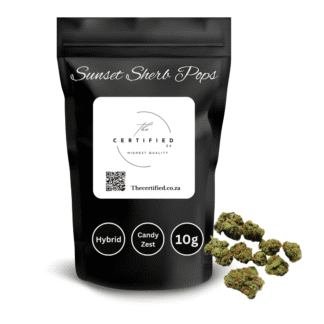 R350,00Select options This product has multiple variants. The options may be chosen on the product page
R350,00Select options This product has multiple variants. The options may be chosen on the product page -
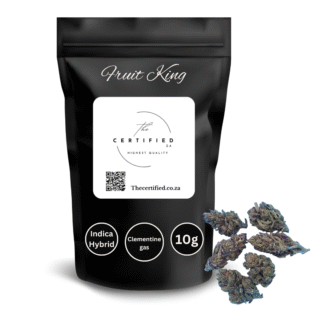 R350,00Select options This product has multiple variants. The options may be chosen on the product page
R350,00Select options This product has multiple variants. The options may be chosen on the product page -
 R300,00Select options This product has multiple variants. The options may be chosen on the product page
R300,00Select options This product has multiple variants. The options may be chosen on the product page -
 R450,00Select options This product has multiple variants. The options may be chosen on the product page
R450,00Select options This product has multiple variants. The options may be chosen on the product page
